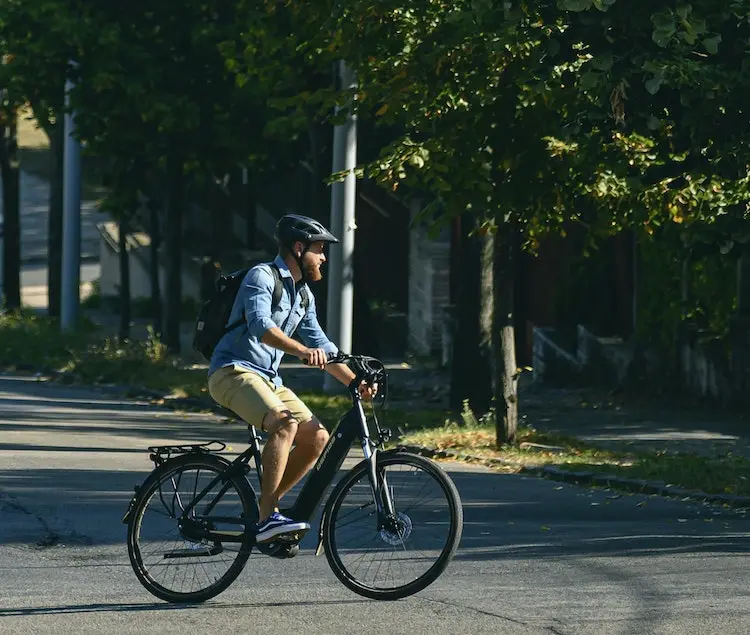Looking for a pedal assist ebike, but confused about which one to buy? Worry not; we are here to assist you with the ultimate guide to buying an e bike. In this blog, we will take you through all the information you need to buy the perfect pedal assist bike for you.
Understanding the Three Classes of Electric Bikes
There are three classes of e-bikes, each with different characteristics and restrictions.
Class 1
Class 1 e-bikes provide assistance only when the rider pedals, and assistance stops when the bike reaches 20 mph (32 km/h). This type of e-bike is suitable for bike paths, roads, and any other areas where traditional bicycles are allowed. QUANTUM eBikes sells only Class 1 bikes.
Class 2
Class 2 e-bikes come with a throttle that provides a boost without the need for pedaling, and assistance also stops at 20 mph (32 km/h). These e-bikes are permitted in the same areas as Class 1 e-bikes.
Class 3
Class 3 e-bikes provide assistance only until the bike reaches 28 mph (45 km/h), making them a popular choice for commuters. Like Class 1 and Class 2 e-bikes, they are allowed on bike paths, roads, and other areas where traditional bicycles are permitted. However, they may be subject to more restrictions than other classes of e-bikes. For example, Class 3 electric bikes are prohibited in Canada.
Class 1 and Class 3 e-bikes are the most popular among riders because they still require pedaling, which allows for a more natural cycling experience.
Disclaimer: These classifications and rules may vary from country to country and state to state. Kindly check with your local authorities before buying an electric bike.
Everything you need to know about buying an e-bike
Understanding your options is important before buying an ebike. Different bikes have different motor and battery systems that you might want to look into. Electric road bikes also have different pedal power as per the type. Electric mountain bikes may have larger e bike batteries and folding e bikes may have smaller batteries providing lesser e bike range. So it’s important to study the types of pedal assist bikes and their utility. Every electric bike buyer’s guide is incomplete without explaining the types of electric bicycles.
What types of electric bicycles are there?
Folding bikes and Compact E-Bikes
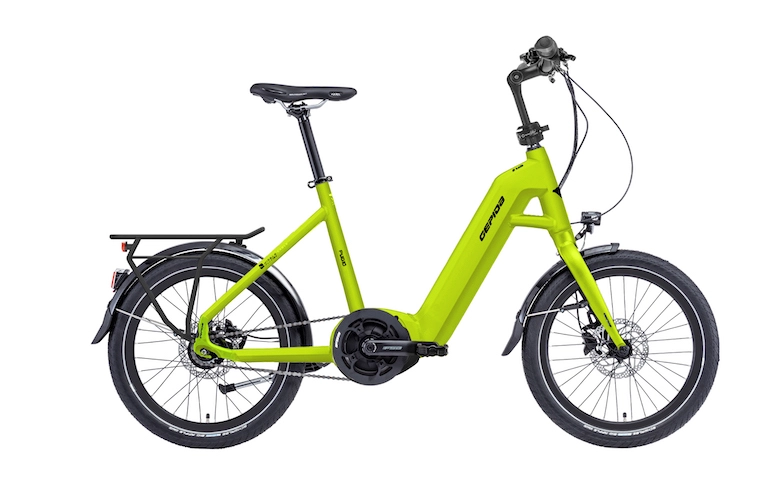
Electric folding and Compact bikes are designed for commuters who need a bike that is easy to store and transport. They usually have small wheels and a lightweight frame that can be folded down to a compact size. They are a good choice for people who have limited storage space or who want to combine cycling with public transport.
City E-Bikes/ commuter bike
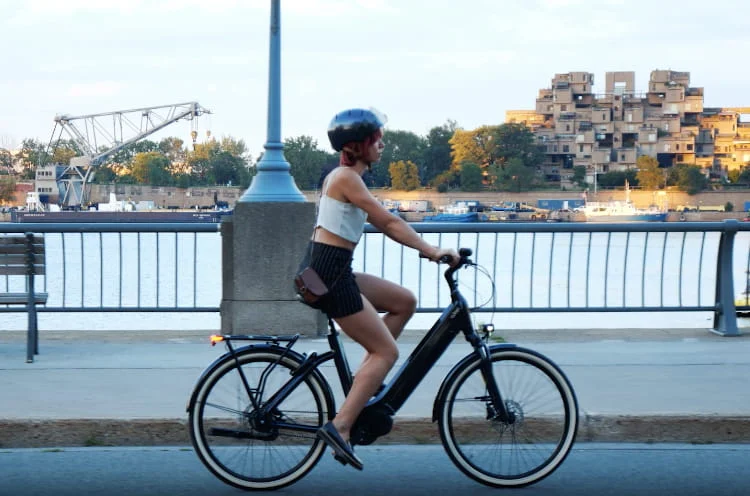
These bikes are designed for urban cycling and commuting. They usually have a comfortable, upright riding position and wide tires for stability. They also come with features such as lights, fenders, kickstand, bell and racks for carrying luggage. City e-bikes are a good choice for people who want a comfortable and practical bike for everyday use.
Hybrid E-Bikes
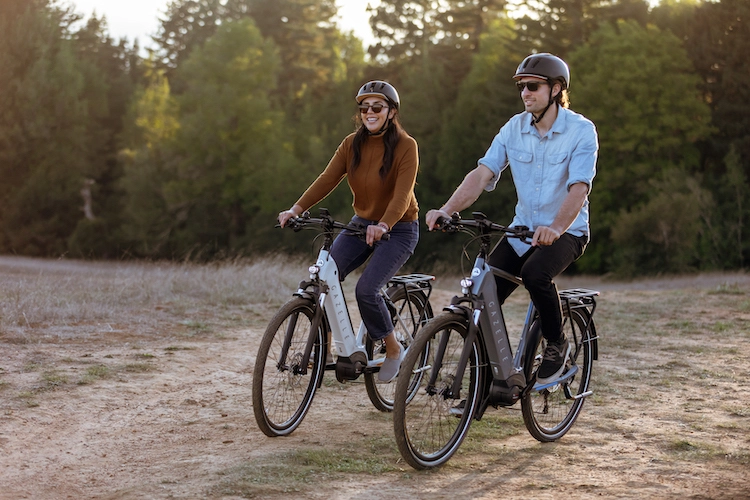
These electric assist bikes are a cross between road and mountain bikes, and are designed for a variety of terrains. They usually have wider tires than road bikes for better traction on rough surfaces, and a more upright riding position for comfort. Hybrid e-bikes are a good choice for recreational riders who want to explore different types of terrain.
Mountain E-Bikes
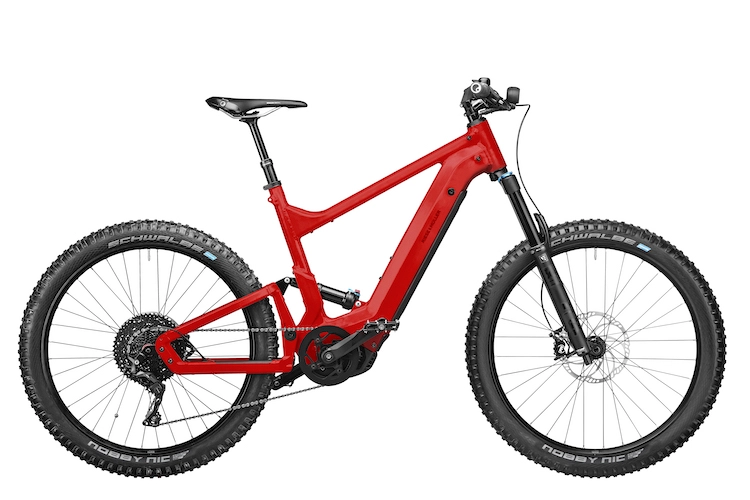
These bikes are designed for off-road cycling, with features such as wide tires, full suspension, and a powerful motor that can assist the rider on steep inclines. Mountain electric bikes are ideal for riders who want to tackle challenging terrain without getting exhausted.
Cargo E-Bikes
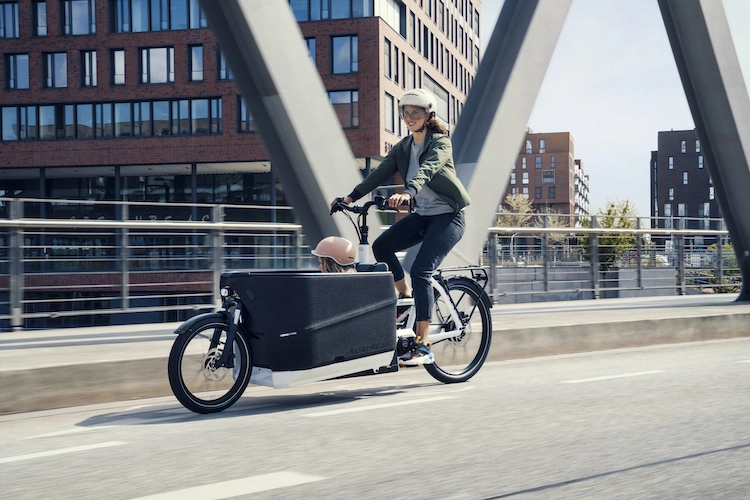
These electric cargo bikes are designed for carrying heavy loads, such as groceries, equipment, children, and your dog. These cargo e bikes are different from conventional bikes. They usually have a longer wheelbase and a sturdy frame to accommodate the weight, and can be equipped with cargo racks or baskets. Cargo e-bikes are a good choice for families or businesses that need to transport large items. An electric cargo bike is also good for carrying luggage around.
Tandem E-Bikes
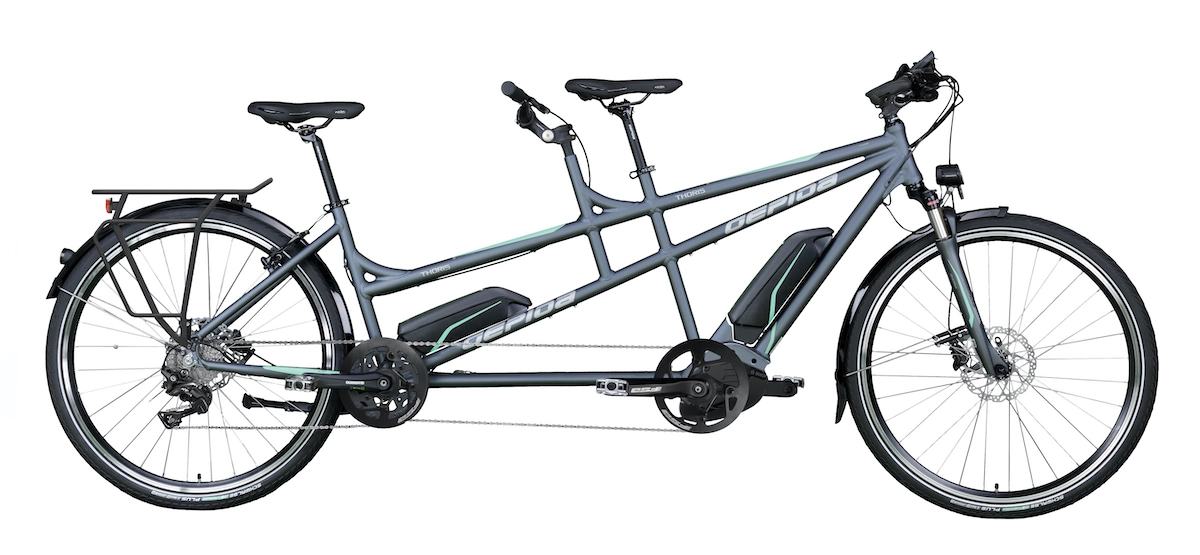
These bikes are designed for two riders, with one rider in the front and one in the back. They are a good choice for couples or friends who want to ride together but have different cycling abilities. Tandem e-bikes are equipped with a motor, and one or two batteries to assist the riders, making it easier to pedal for longer distances.
Types of E-Bikes based on Motor Location
Hub motor e-bikes
These e-bikes have their electric motor located in the hub of the front/rear wheel. Hub motor e-bikes tend to be simpler and more affordable than other types of e-bikes.
Pros
→ Simple and easy to use, with fewer moving parts than other types of e-bikes.
→ Generally more affordable than other types of e-bikes.
→ Quieter and more discreet than other types of e-bikes.
Cons
→ Less powerful than mid-drive motor e-bikes, which may limit their performance on hills or challenging terrain.
→ May be less efficient than mid-drive motor e-bikes, which can reduce battery life.
→ Can be less balanced and stable than mid-drive motor e-bikes, especially at higher speeds.
Mid-drive motor e-bikes
These e-bikes have their electric motor located near the bottom bracket of the frame, where the pedals are attached. Mid-drive motor e-bikes are generally more powerful and efficient than hub motor e-bikes, and they provide better balance and handling because the motor’s weight is closer to the center of the bike.
Pros
→ More powerful and efficient than hub motor e-bikes, providing better performance on hills and challenging terrain.
→ Better balanced and more stable than hub motor e-bikes, especially at higher speeds.
→ Can be more versatile and customizable than hub motor e-bikes, with different options for motor power and battery capacity.
Cons
→ Generally more expensive than hub motor e-bikes.
→ Can be more complex and difficult to maintain than hub motor e-bikes.
→ Can be louder and less discreet than hub motor e-bikes.
All-wheel-drive e-bikes
These e-bikes have motors in both the front and rear wheels, providing extra power and traction. All-wheel-drive e-bikes are ideal for off-road and challenging terrain.
Pros
→ Provide extra power and traction, making them ideal for off-road and challenging terrain.
→ Can be more stable and balanced than other types of e-bikes, especially on rough terrain.
→ May offer better performance in wet or slippery conditions.
Cons
→ Generally more expensive than other types of e-bikes.
→ Heavier and more complex than other types of e-bikes, which can make them more difficult to maneuver and transport.
→ Can be more difficult to maintain than other types of e-bikes, with more components and moving parts to consider.
Selecting the right electric bike according to the frame
High frame
A high frame e-bike has the battery mounted on the frame’s downtube or seat tube or integrated inside the frame. These e-bikes are comfortable for both young men and women.
They are also suitable for riders of all ages and of varying physical fitness levels. However some people may find it more challenging to mount and dismount due to the higher top tube.
Low frame
A low frame e-bike has a large V-frame. The battery is mounted on the rear rack or integrated into the frame of the bike. Many people like the low step-through, which is easy to step over. Low frame e-bikes provide stability and safety.
Mid frame
A mid frame e-bike is between a high-step bike and a low step bike. The battery is usually integrated into the frame. Mid-step frame bikes appeal to everyone, men and women.
Some general points to keep in mind while buying an e-bike
Determine your needs
Before purchasing an e-bike, consider your intended use, such as commuting, recreational riding, or off-road biking. This will help you narrow down the options and choose an e-bike that meets your specific needs.
Decide on the type of e-bike
There are several types of e-bikes available, including road bikes, mountain bikes, folding bikes, and cargo bikes. Choose the type of e-bike that fits your needs and preferences.
Check the motor and battery
Look for an e-bike with a motor that meets your power needs and a battery that provides an adequate range. Consider factors such as battery capacity, charging time, and motor power output (Nm).
Consider the bike’s weight
E-bikes are generally heavier than traditional bikes due to the motor and battery. Consider the weight of the bike and how easy it will be to transport and store.
Test ride the bike
Try out the e-bike before purchasing it. This will give you a feel for the bike’s handling, comfort, and performance.
Check local regulations
E-bike regulations can vary by location. Make sure you understand the rules and regulations in your area before purchasing an e-bike.
Consider the cost
E-bikes can cost up to several thousand dollars. Consider your budget and choose an e-bike that provides the features and performance you need at a price you can afford.
We hope this information will help you choose the right bike!
Sources:
https://www.juicedbikes.com/pages/e-bike-classifications
https://ecells.com/benefits-of-all-wheel-drive-e-bikes/
https://evelo.com/pages/evelo-difference__advantages-mid-drive-motor-vs-hub-motor

